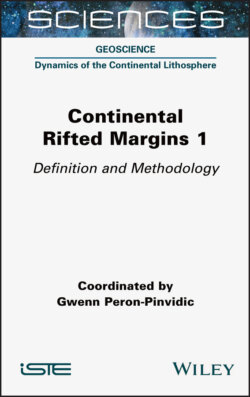Читать книгу Continental Rifted Margins 1 - Gwenn Peron-Pinvidic - Страница 41
1.4. Subsidence
ОглавлениеSubsidence is the stage that leads to the progressive deepening of the basin floor and hence allows the accumulation of sediments in rift basins. It is the process by which the lithosphere regains isostatic equilibrium. Accommodation or accommodation space refers to the amount of space available for sediments and/or magmatic material to accumulate.
On rifted continental margins, three main types of mechanisms can contribute to subsidence:
1 1) Extension: the continental crust stretching leads to the formation of faults whose activity generates topographic depressions by the downward movement of the hanging walls. This is the initial tectonic subsidence and is a syn-rift stage.
2 2) Thermal cooling: with time, rifted margins get wider. As the rift axis moves away, the thinned lithosphere also becomes colder and denser, promoting further subsidence. Additionally, during lithospheric stretching, the underlying asthenosphere naturally rises underneath the rift axis. With time, the warm asthenosphere progressively cools into mantle lithosphere, a process occurring over many tens of millions of years. From these two processes, the lithospheric plate thickens until the thermally defined lithosphere–asthenosphere boundary regains its initial depth. Because lithospheric mantle is denser than asthenospheric mantle, this cooling process also induces subsidence in the rifted margin. The entire process is called thermal subsidence.
3 3) Loading, sedimentary or volcanic: additional subsidence is caused by the sediment/volcanic load and/or the weight of the water that fills the accommodation space of the rift zone. This is a process that is present at all rifting stages. The emplacement of large volumes of hot magma in the extending system can influence the uplift–subsidence curve of the basin, depending on the volume and the rate of their emplacement (Royden and Keen 1980).
Densification processes of the crust can also influence subsidence, such as increases in density driven by changing pressure/temperature conditions and/or the emplacement of higher density melts into the lower density upper crust, as mentioned above.
Additional mechanisms may also influence subsidence curves, like asthenospheric mantle flow. The asthenospheric mantle is in constant motion, due to convection caused by thermal or density gradients: hot mantle material rises, cools and then sinks in convection cells. Based on this, strictly speaking, very few places on Earth are actually in perfect “isostatic equilibrium” at geological scales (Watts 2001). Mantle convection is known to produce large-wavelength dynamic topography in the lithosphere, but even small-scale convection cells can impact local basin subsidence (Braun 2010; Petersen et al. 2010).
Based on the relationships of subsidence patterns and the sources causing subsidence, subsidence curves should be diagnostic of each type of sedimentary basin (McKenzie 1978; Bott 1979; Xie and Heller 2009; Allen and Allen 2013). In fact, Xie and Heller (2009) compared subsidence curves from various basin-types around the world and established a relationship between the shape of subsidence curves and different extensional settings (see Figure 1.28). In general, rift basins in extensional tectonic settings experience two distinct phases in their subsidence curves: an initial steep gradient, related to the tectonic subsidence that accompanies the rift tectonic episode, followed by a gentler but longer-lasting curve, corresponding to lithospheric thermal re-equilibration. On the opposite spectrum of rift-type basins, foreland basins typically have subsidence curves with an initial shallow curve before a steep one, and strike-slip basins are often observed as having very fast subsidence. In practice, however, subsidence curves are usually more complicated than envisaged by this basic approach. Rift evolution is often multiphase, with sometimes long-lasting periods of tectonic quiescence, leading to uplift–subsidence patterns that may be very different from the ideal case (see Chapter 2).
Further reading.– The above descriptions are abbreviated and often simplified. If interested in reading and learning further, the reader is referred to the following list of publications and references:
– General: (McKenzie 1978; Bott 1979; White et al. 1987; White and McKenzie 1989; Kusznir and Ziegler 1992; Xie and Heller 2009; Allen and Allen 2013).
Figure 1.28. Tectonic subsidence curves for various types of basins around the world (source: Xie and Heller 2009)
CONTINUATION OF CAPTION FOR FIGURE 1.28.– Rifted margins, strike-slip basins, intracontinental basins, foreland basins and forearc basins. Locations of each individual basin are shown on the map. In the curves for rifted margins, black solid curves correspond to the time scale at the top of the graph and black dotted lines to the time scale at the bottom of the graph. Note the different shapes of the curves depending on the extensional setting: the two-step curves for rifted margins (first steep, then gentle), the very steep curves for the strike-slip basins and the very long-term gentle curves for the intracratonic basins.
